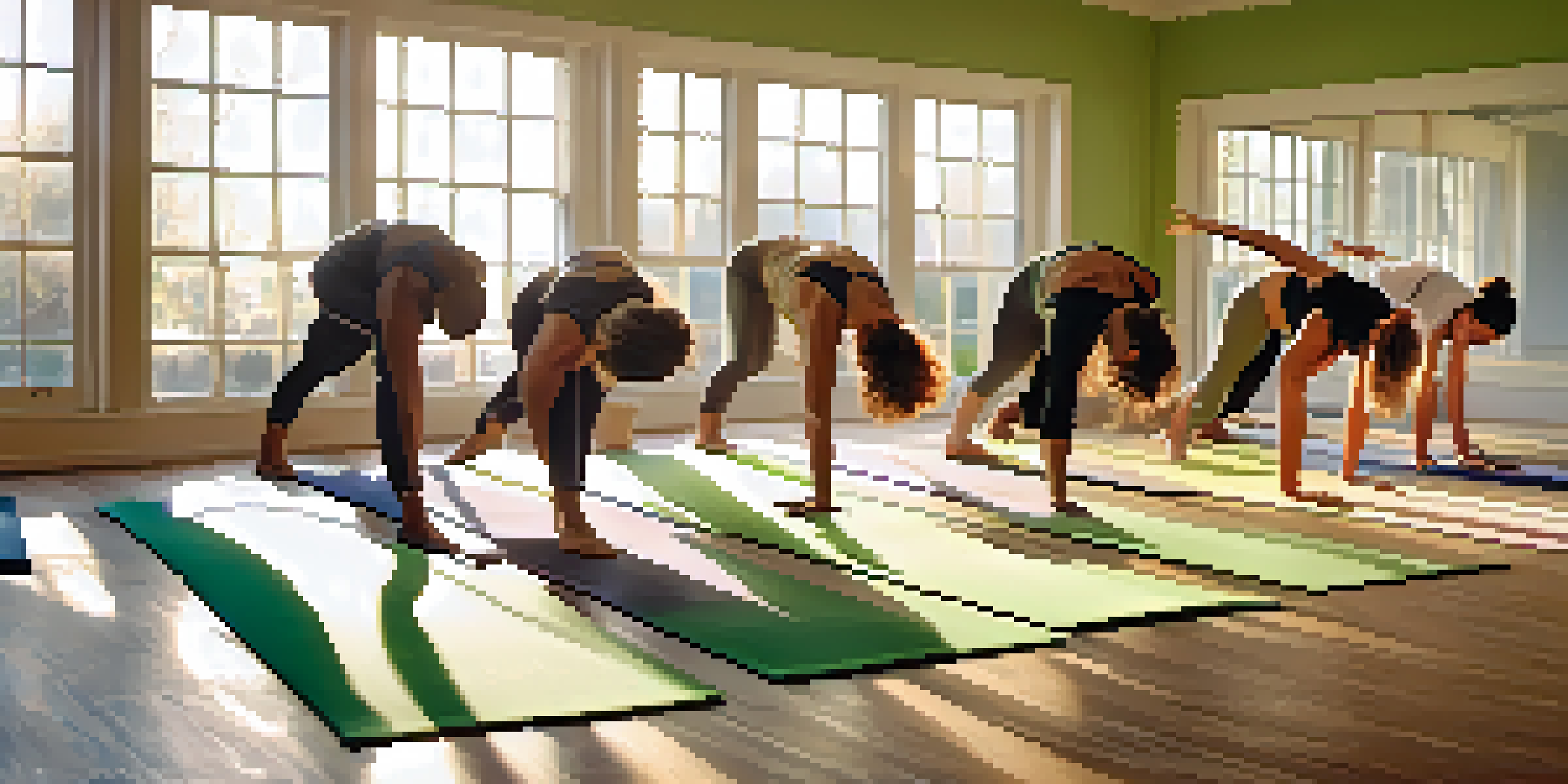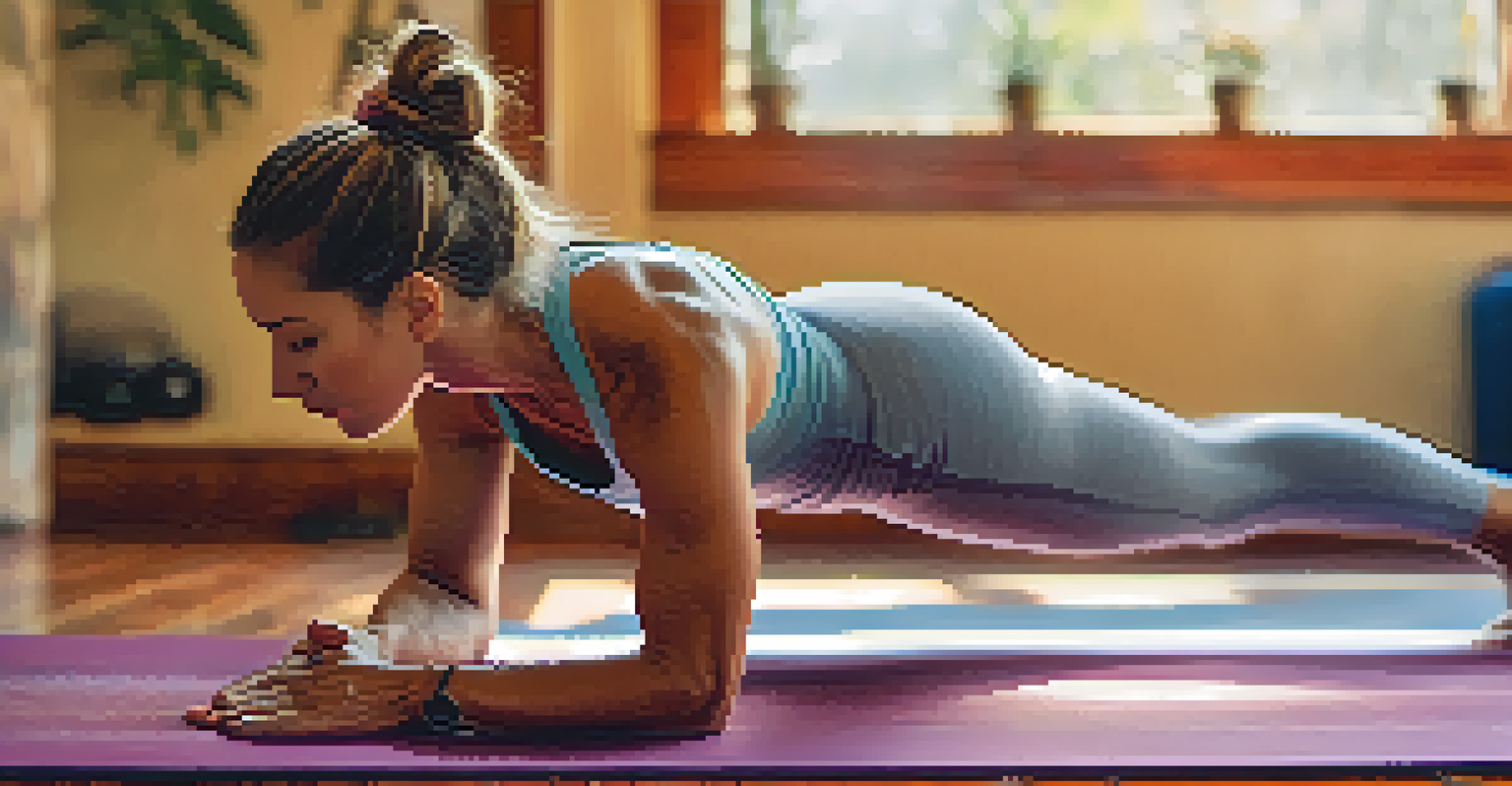Vinyasa Flow: A Dynamic Practice for Cardiovascular Fitness

What is Vinyasa Flow Yoga?
Vinyasa Flow is a style of yoga that emphasizes continuous movement, linking breath to action. Unlike more static forms of yoga, Vinyasa encourages fluid transitions between poses, creating a dynamic experience. This style is often referred to as 'flow' yoga due to its smooth, flowing movements, much like a dance.
Yoga is not about touching your toes, it’s about what you learn on the way down.
Each class typically begins with a warm-up, followed by a series of poses that build in intensity. The rhythm of the practice is dictated by your breath, which not only helps in focusing the mind but also enhances the overall experience. This fluidity and connection to breath make Vinyasa a unique form of exercise.
As you move through different postures, you'll notice how the body warms up and becomes more engaged. This engagement boosts heart rate and builds both strength and endurance, making it an excellent choice for those looking to improve cardiovascular fitness.
Benefits of Vinyasa Flow for Cardiovascular Health
One of the primary benefits of Vinyasa Flow is its ability to elevate your heart rate, which can improve overall cardiovascular health. As your heart pumps faster during a class, you're essentially giving it a workout, similar to the effects of aerobic exercises. This can lead to improved heart function over time.

Additionally, regular practice can enhance lung capacity and efficiency, as you're encouraged to breathe deeply and rhythmically. This focus on breath not only calms the mind but also supports better oxygen delivery throughout the body. The result? More energy and improved stamina both on and off the mat.
Vinyasa Flow Enhances Heart Health
The dynamic movements of Vinyasa Flow elevate heart rate, promoting better cardiovascular fitness and overall heart function.
Moreover, the focus on movement and breath in Vinyasa can help reduce stress and anxiety, which are often linked to heart health. By promoting relaxation, you're not only benefiting your cardiovascular system but also your overall well-being.
How Vinyasa Flow Builds Strength and Flexibility
While cardiovascular fitness is a key focus, Vinyasa Flow also incorporates strength-building elements. Many poses require you to support your body weight, which can lead to increased muscle strength over time. Think of poses like Plank or Chaturanga; they engage multiple muscle groups, providing a robust workout.
The mind is everything. What you think you become.
Flexibility is another significant benefit of this practice. As you flow from one pose to another, your muscles are lengthened and stretched, improving overall flexibility. This is essential for maintaining a balanced body and can prevent injuries, especially for those who engage in more traditional forms of exercise.
In essence, Vinyasa Flow offers a holistic approach to fitness. By combining strength, flexibility, and cardiovascular conditioning, it creates a well-rounded workout that caters to various aspects of physical health.
The Mind-Body Connection in Vinyasa Flow
An essential component of Vinyasa Flow is the mind-body connection cultivated through each practice. As you focus on your breath and movements, you develop greater awareness of your body. This mindfulness translates into other areas of life, promoting overall mental well-being.
This practice encourages you to be present, helping to mitigate distractions and stressors from daily life. As you flow through your movements, you create a moving meditation that fosters a sense of calm and clarity. This mental clarity can be just as beneficial for cardiovascular health as the physical aspects.
Build Strength and Flexibility
Vinyasa Flow combines strength-building poses with fluid transitions, improving both muscle strength and flexibility.
Incorporating this mindfulness into your routine can lead to healthier lifestyle choices overall. When you feel more connected to your body, you may find yourself making better decisions regarding nutrition and exercise, further benefiting your heart.
Getting Started with Vinyasa Flow
If you're new to Vinyasa Flow, starting with a beginner class is a great idea. Many studios offer classes tailored for newcomers, focusing on the fundamentals of breath and movement. This foundation will help you build confidence and ensure you understand the basics before moving on to more advanced practices.
You can also explore online classes, which provide flexibility and accessibility. Many yogis share their flows on platforms like YouTube or dedicated yoga apps, allowing you to practice at home. Just ensure that the instructor's style resonates with you, as this will enhance your experience.
As you progress, you'll find Vinyasa Flow can be adapted to fit your fitness level and goals. Whether you want a gentle flow or an intense workout, there's a class out there for you, making it an inclusive practice for everyone.
Safety Tips for Practicing Vinyasa Flow
Safety is paramount when practicing Vinyasa Flow, especially for beginners. It's essential to listen to your body and not push yourself into discomfort. If a pose feels too challenging, feel free to modify or skip it entirely; yoga is about personal growth, not competition.
Having a knowledgeable instructor can significantly enhance your practice. They can offer guidance on proper alignment and provide modifications for various poses. This support is crucial for preventing injuries and ensuring you're getting the most out of your practice.
Mind-Body Connection through Flow
The practice fosters mindfulness and mental clarity, positively impacting overall well-being and encouraging healthier lifestyle choices.
Lastly, consider incorporating props like blocks or straps. These tools can help you achieve better alignment and deepen your stretches without straining. Remember, the goal is to progress at your own pace while enjoying the journey of self-discovery through movement.
Incorporating Vinyasa Flow into Your Fitness Routine
To maximize the benefits of Vinyasa Flow, consider incorporating it into your regular fitness routine. Aim for at least two to three classes per week, allowing for rest days in between to let your body recover. This consistency is key to building endurance and strength over time.
You can also pair Vinyasa with other forms of exercise, such as running or strength training. This combination can create a well-rounded fitness regimen that enhances cardiovascular health while building muscle. The variety will keep your workouts fresh and engaging.

Ultimately, the goal is to find a balance that suits your lifestyle and fitness aspirations. By making Vinyasa Flow a regular part of your routine, you'll not only improve your cardiovascular fitness but also enjoy the mental and emotional benefits that come with it.